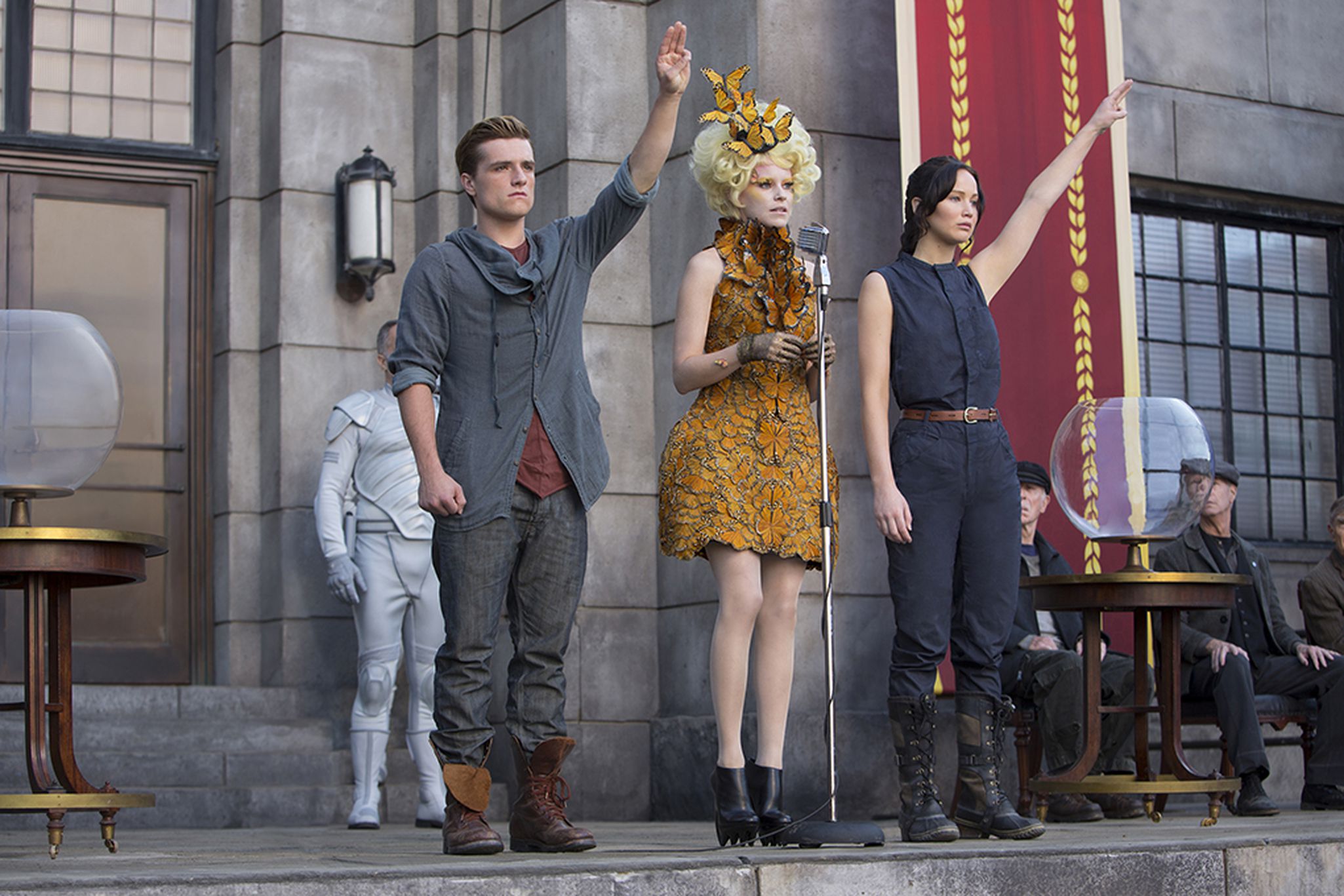Writing science fiction is one of the most immersive, exciting challenges a writer can take on. You’re responsible for leading readers to a brave new world, while also bringing them on a journey they can relate to — seamlessly balancing “out of this world” elements with raw emotions.
It might seem daunting, but we’re here to help! For this post, we’ll first cover the definition of “science fiction” and which types of sci-fi you might expect to (closely) encounter. We’ll then walk you through how to write science fiction, complete with tips from sci-fi editors. Let’s go!
What is science fiction?
Science fiction is a genre involving scientific speculation about our world — and typically other worlds as well. It’s often based on major technological advances such as time or space travel, new sources of energy, huge medical breakthroughs, and other life forms and societies beyond ours.
Sci-fi is a vast category with many subgenres. For example, a space opera and a dystopian sci-fi novel technically both fall under the same umbrella of “science fiction.” Each subgenre brings different features and tropes you can play into or subvert — so the first key to writing sci-fi is to read deeply in your chosen niche, to familiarize yourself with these elements!
We won’t go over every single subgenre of science fiction in this post. But let’s quickly touch on one important distinction that new writers should be aware of: the difference between writing hard and soft science fiction.
“Hard” vs. “soft” sci-fi
All science fiction falls into one of two categories:
- “Hard” science fiction. This is grounded in real scientific laws and generally tries to put forward a version of reality which could, in theory, actually happen; or
- “Soft” science fiction. This is less concerned with reality and more with narrative possibilities, particularly in service of social commentary. Although these stories still incorporate “science,” they’re often based on principles which could only exist in an alternate universe — making it largely unrecognizable to us as readers.
One particularly well-known example of “hard” sci-fi would be Andy Weir's The Martian. In this novel (and film), astronaut Mark Watney is stranded on Mars and presumed dead by NASA. He must then figure out how to a) keep himself alive with almost no resources at his disposal, and b) re-establish contact with Earth — all in a very scientifically plausible way.
Meanwhile, some “soft” sci-fi classics include Frankenstein, the Dune series, and Ursula K. Le Guin’s The Left Hand of Darkness. In the landmark Le Guin novel, for instance, a diplomat is sent to an “ambisexual” planet where there is no sex or gender binary. While navigating the unfamiliar culture of this other world, the diplomat also has to manage the intergalactic power-play between planets.
Le Guin’s focus on sex and gender allows us to relate directly to the book despite the unfamiliar setting, giving it a strong “soft” sci-fi quality. This world may be far removed from reality as we know it, but because the themes are so relevant, we still find it to be a great story.
How to write compelling science fiction
Now that we’ve covered the basics of science fiction, let’s get into relevant advice for all sci-fi writers — starting with the “big question” that sets your story in motion.
1. Pinpoint the premise
Inspiration for writing science fiction usually comes in the form of a premise or idea for another world. If you’ve landed on this post, you may already have a brilliant idea for your premise that you just need to flesh out!
But for those who don’t, it might help to consider the “big questions” from particularly iconic sci-fi stories. For instance:
- 🦖 Jurassic Park: What if we could clone dinosaurs from ancient DNA — and humans could visit them in a theme park?
- 👾 Ender’s Game: What if there were a far-off alien race which humans struggled to understand — and war broke out between the aliens and the humans?
- 🤖 Blade Runner: What if “replicant” humanoid robots were created to work on distant colonies — and some of these androids escaped to Earth?
As you’ll gather from these examples, the best sci-fi stories not only ask an interesting “what if” question, but take things further by asking “and then what would happen?”
While the what if part should be pure scientific speculation, the second part should deal with the social, political, or other related consequences — lending a more “human” to your story.

💫 Pro editor tip: Get to the heart of the story
As we spoke to editors about writing science fiction, one key piece of advice kept coming up: the importance of keeping the “heart of your story” in mind, and ensuring that a core of humanity is present throughout.
“Every good story, regardless of genre, has a strong core,” says speculative fiction editor Rebecca Brewer. “Consider what’s at the heart of your story once you take away all the technical details.
“Is it about a nobody who saves the universe, or is it someone searching for a new family? Whatever the core of your story is, being able to condense it into one or two sentences — as if you’re pitching it to an agent — will help you focus the narrative right from the start.”
For example, in Ender’s Game, the “human core” of the story could be condensed as such:
A young boy, who’s always felt different from others, trains as an army commander. Which part of him will triumph — his merciless tactical side or his empathetic side?
In other words: Initial speculative premise + a more intimate human element = recipe for the perfect sci-fi story. So as you search for your own sci-fi premise, consider not only its capacity for scientific intricacy, but also for human drama.

The best science fiction editors are on Reedsy
Sign up to request quotes from editors who shape bestsellers.
2. Imagine your society and its history
Speaking of which, in order for your story to have conflict and drama, your characters and their society need to have some history. We’ll get into individual characters a bit later, but for now, let’s think about history and society in the traditional sense. That is:
- What happened to your world in the past; and
- How do cultural norms reflect that history in the present?
To give an example, the worldbuilding in The Hunger Games is a great model of speculative history done right. In this dystopian sci-fi novel, teenagers must compete for their lives in a winner-take-all competition called the Hunger Games, which is also broadcast to all other citizens of Panem.
But it’s not just the tournament itself that makes the story so compelling; it’s how the book lays out the history of Panem to explain it. Ravaged by war after a social uprising, they implemented the Games as a means of punishing the lower-class rebels, while the upper-class victors remain wealthy and secure in the Capitol.
Panem’s history — and the resulting socioeconomic gap between its peoples — is not only intriguing, but lends greater meaning to what happens in the present-day Hunger Games… and sets the stage for much bigger things to happen throughout the trilogy.

💫 Pro editor tip: Draw inspiration from real-life structures
As you do this, Rebecca Brewer suggests thinking specifically about the “power holders” in your world. Consider how they validate their status — whether through military, economic, or technological prowess — and how they are similar to “power holders” in real life.
Indeed, an understanding of real-world power structures will give you a strong sense of how to build out your society. You can then either mimic or subvert these dynamics to craft your fictional world — as many of the best sci-fi authors, like Suzanne Collins and Frank Herbert (author of the Dune series), have done in the past.
You may even wish to write up a brief “history” of how your world came to be, just to keep things internally consistent! While you don’t need to reveal every detail to readers, this can be great to have for your own reference as you’re writing.
3. Give your world fixed rules
Something else you’ll probably want to write down: the scientific rules that govern your world, especially if they diverge significantly from our own. Basically, this is where you’ll create your own laws of physics — how electrifying! ⚡
The nature of these rules will depend on the precise world you’re building. If you’re serious about sci-fi, you’ll want to take a deep dive with a worldbuilding template that not only covers these rules, but also incorporates the historical and thematic elements we’ve touched on.
That said, here are a few initial questions to get the ball rolling on rules for your sci-fi story:
- What is the main power source in your story? Again, power is key! So where does it actually come from: technology, natural-born ability, or something else? How can one harness this power, and can it be combined with other forms?
- What are the scientific limits of this power? For example, maybe your technology relies on solar power, so it cannot be used at night. Or maybe certain members of your society are born with a particular ability, but their power weakens as they age.
- How might those limits still be surpassed? This is often the key to motivating your protagonist, your antagonist, or both — and may allow you to pull off a satisfying plot twist.
💫 Pro editor tip: Spread out your worldbuilding
At this stage, sci-fi editor Ashley Wyrick has another great tip for you: sprinkle in your worldbuilding piece by piece, as details come up organically, to create a more immersive world and avoid info-dumping.
“Add little worldbuilding details into everything,” says Wyrick. “Into action scenes, dialogue, minor plot points — everywhere.
“Give bits, pieces, and hints all over the place by making them part of the characters’ experiences. If you want to really emphasize something, try mentioning the same detail in new ways, or showing how it can affect characters in different ways.”
And now that we’ve covered the premise, history, and rules of your wider universe, it’s time to zoom in on your main character!
4. Place your protagonist’s morality at the center
Let’s return to your essential premise, and specifically, the second part of the question: “and then what would happen?”
This is where you’re going to get your protagonist involved. Whether they’re a classic “Chosen One,” an anti-hero with an axe to grind, or a seemingly innocent bystander who’s been roped in by circumstance, they’re the one who will confront the main issue(s) of your world — and, with any luck, come to some sort of solution.
Let’s look at Ted Chiang’s novella The Story of Your Life for an exemplary sci-fi protagonist. In this novella (adapted as 2016’s Arrival), the protagonist is Dr. Louise Banks: a linguist who must establish communication with aliens that have just landed on Earth.

Banks soon discovers that the aliens experience time in a non-linear fashion — and that their language reflects this as well. Banks herself then begins to experience premonitions, which she can use not only to translate the aliens’ message and maintain peace on Earth, but also to shape her own life. Will she follow the path she has seen for herself — which includes a devastating personal loss — or will she attempt to diverge from it?
This story raises fascinating questions about our fear of outsiders, the nature of language and communication, and free will. It’s a brilliant work of sci-fi, and much of it hinges on the strength of Louise Banks as a protagonist: her intelligence combined with her uncertainty, her pragmatic approach to work in contrast to her arguably unpragmatic choice to marry and have a child (despite knowing that child’s fate), and so on.
💫 Pro editor tip: Don’t neglect your characters
Your own sci-fi protagonist should be similarly complex, and faced with similarly tough choices. It might sound obvious, but this is one of the most common mistakes that sci-fi authors make — they spend so much time worldbuilding that they forget about their characters!
“Remember, science fiction is just a cloak draped over what all fiction aims to do: tell human stories of love, loss, ambition, and tragedy,” says sci-fi editor Allister Thompson — once again, raising the persistent idea of humanity at the heart of things.
“To that end, you need to have round characters that are believable and relatable, as much as they would be in any piece of literary fiction.”
With that, we’ve come to our final step in the process of writing spectacular sci-fi…
5. Allow their humanity to prevail
As we’ve reiterated throughout this guide, your science fiction can be as wacky as you want in terms of worldbuilding, but it must retain a core of human relatability.
So when push comes to shove and you’re wrapping up your story, try to ensure that — in one way or another — your protagonist’s (or protagonists’) humanity prevails. While it’s true that not every sci-fi story ends happily, there is almost always an element of humanity that either forms the crux of the climax or comes to light afterwards.
Let’s revisit our earliest examples once more — this time, considering how each of these stories incorporates humanity into their climaxes and/or conclusions.
(Major spoilers ahead for each of these titles!)
- 🦖 Jurassic Park: The theme park devolves into chaos as the dinosaurs begin breeding and the security system fails. The only people to escape are those who respect the sanctity of nature: Dr. Grant, Dr. Sattler, and so on. Meanwhile, those who were inhumanly callous about the dinosaurs are served their karmic comeuppance and killed.
- 👾 Ender’s Game: Ender wins the final battle in his combat simulation against the aliens… only to find it wasn’t a simulation at all. Horrified to have unwittingly committed genocide, he devotes the rest of his life to finding a new home for their Hive Queen, so as to someday repopulate their species.
- 🤖 Blade Runner: Bounty hunter Rick Deckard is saved by the one of the very androids he was assigned to kill. The android, Roy, then dies in front of him — while delivering a powerful speech about his own memories being “lost in time, like tears in rain.”
In other words, there are countless ways to incorporate humanity into your sci-fi story so that it plays a meaningful role in the conclusion.
Humanity doesn’t always have to “save the day,” so to speak — but it cannot be pushed aside. Even if your hero has tried to deny it throughout the story, their humanity must rear its irrepressible head before the final scene fades to black.
With this step-by-step process, examples, and pro tips from sci-fi editors, you should be well on your way to writing your own amazing science fiction! Best of luck in completing your incredible story… or, in the words of an immortal sci-fi franchise, may the Force be with you.
About the author

Savannah Cordova is a writer from London. Her work has been featured in Slate, Kirkus, BookTrib, DIY MFA, and more. She loves reading and writing short stories, and spends much of her time analyzing literary trends into the ground. You'll often find her with an iced vanilla latte, a book, and a furrow in her brow.







